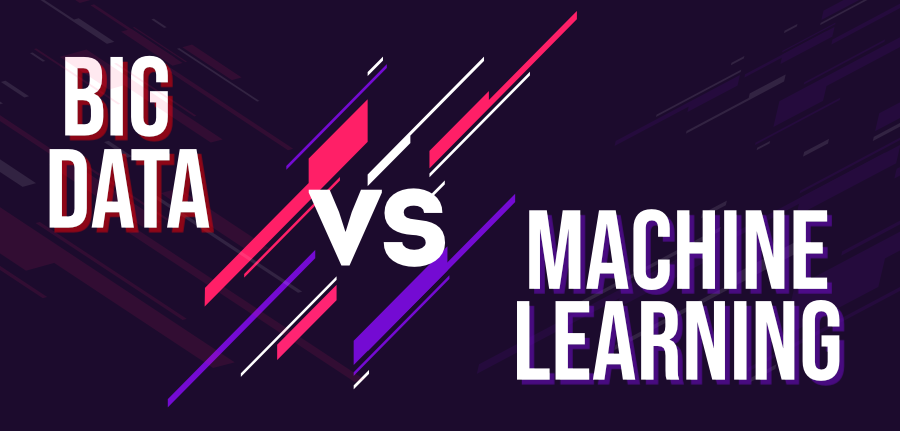大数据:是指大型组织和企业获得的庞大、庞大或海量的数据、信息或相关统计数据。由于难以手动计算大数据,因此创建和准备了许多软件和数据存储。它用于发现模式和趋势,并做出与人类行为和交互技术相关的决策。
机器学习:机器学习是人工智能的一个子集,它有助于在没有明确编程的情况下自动学习和改进系统。机器学习使用算法来处理数据并接受培训,以便在无需人工干预的情况下提供未来预测。机器学习的输入是一组指令或数据或观察。

下表列出了大数据和机器学习之间的差异:
| Big Data | Machine Learning |
|---|---|
| Big Data is more of extraction and analysis of information from huge volumes of data. | Machine Learning is more of using input data and algorithms for estimating unknown future results. |
| Types of Big Data are Structured, Unstructured and Semi-Structured. | Types of Machine Learning Algorithms are Supervised Learning and Unsupervised Learning, Reinforcement Learning. |
| Big data analysis is the unique way of handling bigger and unstructured data sets using tools like Apache Hadoop, MongoDB. | Machine Learning is the way of analysing input datasets using various algorithms and tools like Numpy, Pandas, Scikit Learn, TensorFlow, Keras. |
| Big Data analytics pulls raw data and looks for patterns to help in stronger decision-making for the firms | Machine Learning can learn from training data and acts like a human for making effective predictions by teaching itself using Algorithms. |
| It’s very difficult to extract relevant features even with latest data handling tools because of high-dimensionality of data. | Machine Learning models work with limited dimensional data hence making it easier for recognizing features |
| Big Data Analysis requires Human Validation because of large volume of multidimensional data. | Perfectly built Machine Learning Algorithms does not require human intervention. |
| Big Data is helpful for handling different purposes including Stock Analysis, Market Analysis, etc. | Machine Learning is helpful for providing virtual assistance, Product Recommendations, Email Spam filtering, etc. |
| The Scope of Big Data in the near future is not just limited to handling large volumes of data but also optimizing the data storage in a structured format which enables easier analysis. | The Scope of Machine Learning is to improve quality of predictive analysis, faster decision making, more robust, cognitive analysis, rise of robots and improved medical services. |